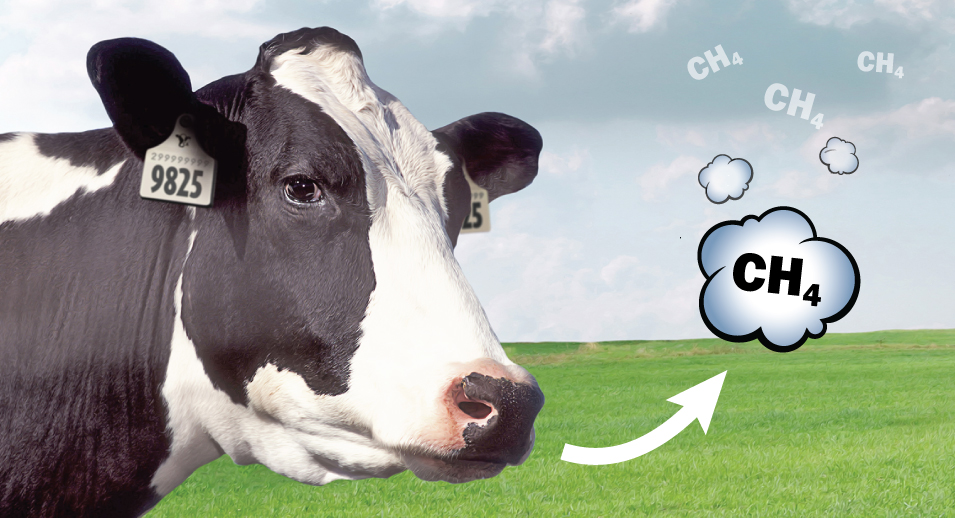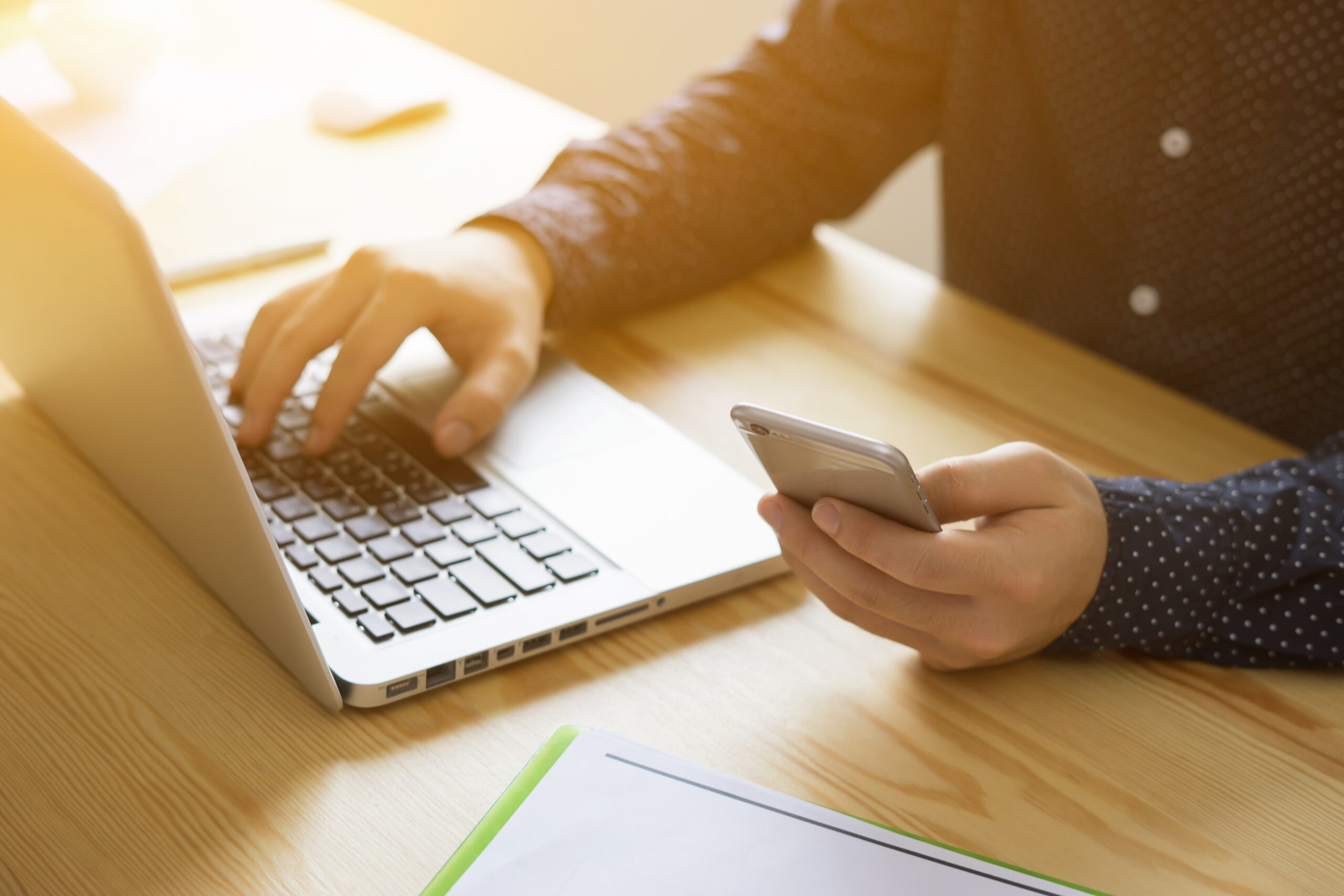Genetic Selection for Reduced Methane (CH4)
- February 13, 2023
Climate change, caused by the rise of greenhouse gases (GHG) in the atmosphere, has become a global concern. One GHG in particular has received more attention compared to others: methane (CH4). Why is there such a large interest in CH4 emissions and what genetic strategies can be used to offset or reduce such emissions?

Methane (CH4), a potent greenhouse gas (GHG), is under the spotlight for two main reasons. First, it is responsible for nearly half the net global temperature change due to human activities in the last decade1. Second, “for limiting future climate change, together with reaching net zero carbon dioxide emissions, strong, rapid and sustained reductions in CH4 emissions is required”, some experts say2. Even though the agriculture industry is not the sole source of increasing global CH4 emissions, it has the potential to mitigate this increase and contribute to climate cooling by reducing its rate of CH4 emissions1, a key asset for limiting global warming to 1.5oC by 20503,4.
As discussed in our previous article, Environmental Footprint of the Dairy Industry, CH4 made up 14% of Canada’s GHG emissions in 2020, of which 30% arose from the agriculture sector5. When accounting for all on-farm and off-farm GHGs involved in the production of 1 kg of milk on Canadian dairy farms, CH4 appears as the largest contributor to the milk footprint at close to 50%. It mostly comes from digestion (enteric fermentation) and to a lesser extent from manure management.
Enteric fermentation is part of a cow’s digestion process where microbes and bacteria break down food generating nutrients for the animal and CH4 as a by-product. This CH4 is emitted into the atmosphere when the cow belches, contributing to the dairy sector’s carbon footprint and representing a loss of 4% to 7% gross energy intake for the animal6. In Canada, the average CH4 produced per cow is approximately 150 kg per lactation. Can genetic selection be used to reduce these emissions, combat global warming, and improve dairy cattle efficiency?
Using Genetics to Reduce Methane Emissions
Using genetics to select for cows with reduced CH4 emissions is a permanent and cumulative solution to reducing GHG emissions. However, CH4 is expensive and difficult to measure resulting in few animals with CH4 data. This prompted researchers at the University of Guelph to look at alternative methods to predict CH4 emissions. Let’s take a closer look at the data:
Collected Data
Under the Efficient Dairy Genome Project (EDGP) and the Resilient Dairy Genome Project (RDGP, see http://www.resilientdairy.ca/), researchers have been collecting CH4 production data to be used as a potential reference population for the estimation of genomic evaluations. This data collection has mainly been conducted using a GreenFeed system, which measures gas fluxes including CH4 from individual animals each time they visit the feed trough component of the machine (Figure 1). However, this method is labor intensive, costly, and not feasible for commercial dairy farms, resulting in relatively few animals with measured CH4 emission phenotypes. As such, researchers from the University of Guelph identified an alternative method, using artificial intelligence and machine learning approaches, that can be used to predict CH4 emissions on a larger scale while the collection of emission data continues.

Figure 1. GreenFeed system used to measure gas fluxes including methane from individual animals.
Predicted Data
Research has shown a link between a cow’s milk composition, especially milk fatty acids, and its CH4 emissions due to their relationship with enteric fermentation. As such, milk composition data can be used to predict a cow’s CH4 emissions. A technique called mid-infrared (MIR) spectroscopy can determine a milk sample’s chemical composition by measuring the absorption of light through the milk. This technology is already used to determine milk components such as fat and protein percentages as well as BHB in milk samples. The Lactanet database contains millions of MIR spectral data collected via our milk recording services and laboratory milk sample analysis. Therefore, predicting CH4 emissions using milk MIR spectral data has great potential and availability, with each MIR analysis of a single milk sample producing over 1000 data points. Lactanet developed CH4 predictions via a machine learning algorithm using milk spectral data and CH4 data collected from research herds in Canada. Using only first lactation data between 120 and 185 days in milk, predicted CH4 was found to have a genetic correlation with collected CH4 data of 85% and a relatively high heritability of 23%.
Methane Efficiency Evaluations
With the use of milk spectral data, Lactanet can accurately predict CH4 emissions for many cows at a low cost, making genetic evaluations for CH4 emissions possible!
In support of Dairy Farmers of Canada’s goal to reach net-zero GHG emissions from farm-level dairy production by 2050, Lactanet will be launching the first ever national genetic evaluation aimed at reducing CH4 emissions from dairy cattle.
Effective April 2023, the single-step genomic evaluation of predicted CH4 will result in Relative Breeding Values (RBV) for Methane Efficiency in the Holstein breed, allowing producers to select for reduced CH4 emissions without sacrificing production traits. Given the large reference population available, the average reliability of Methane Efficiency for genotyped young bulls and heifers will exceed the 70% level.
Keep an eye out for more information on these evaluations as we get closer to implementation in April!
References:
- IPCC, 2021: Summary for Policymakers. In: Climate Change 2021: The Physical Science Basis. Contribution of Working Group I to the Sixth Assessment Report of the Intergovernmental Panel on Climate Change [Masson-Delmotte, V., P. Zhai, A. Pirani, S.L. Connors, C. Péan, S. Berger, N. Caud, Y. Chen, L. Goldfarb, M.I. Gomis, M. Huang, K. Leitzell, E. Lonnoy, J.B.R. Matthews, T.K. Maycock, T. Waterfield, O. Yelekçi, R. Yu, and B. Zhou (eds.)]. Cambridge University Press, Cambridge, United Kingdom and New York, NY, USA, pp. 3−32, doi:10.1017/9781009157896.001. Citation note: refer to Figure SPM.2, p.7.
- IPCC, 2021. ibid. Citation note: refer to D1 statement, p.27.
- IPCC, 2021. ibid. Citation note: refer to D1.7 statement, p.30.
- The Global Methane Pledge. https://www.globalmethanepledge.org/
- Environment and Climate Change Canada [ECCC], 2022. National Inventory Report 1990–2020: Greenhouse Gas Sources and Sinks in Canada. ECCC, Gatineau, QC, Canada. (Cat. No.: En81-4E-PDF). https://publications.gc.ca/collections/collection_2022/eccc/En81-4-2020-1-eng.pdf. Citation note: numbers expressed as CO2 eq. Estimates per IPCC sector, using IPCC Fourth Assessment Report’s 100-year Global Warming Potentials (1 for fossil CO2 (0 for biogenic carbon), 25 kg CO2 eq/kg methane (fossil or biogenic) and 298 kg CO2 eq/kg nitrous oxide).
- Benchaar, C. 2023. Nutritional Strategies to Mitigate Enteric Methane Emissions From Dairy Cows: State of Knowledge and New Perspectives Presentation at the Second virtual symposium of the Sherbrooke Research and Development Centre, Agriculture and Agri-Food Canada, January 24, 2023.











